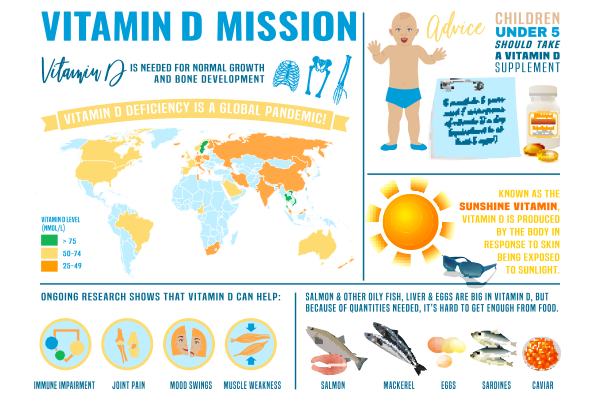
Rickets is a condition that affects bone development in children, leading to soft and weak bones. It is primarily caused by a deficiency of vitamin D, calcium, or phosphate, all of which are essential for maintaining healthy bone structure. Though historically associated with poor nutrition, rickets continue to exist in modern times, especially in areas where malnutrition and limited sunlight exposure are prevalent. This blog explores the rickets symptoms, the underlying causes, and how this condition can be treated and prevented.
Synopsis
What Exactly is Rickets?
Rickets is a pediatric bone disorder where the bones fail to harden properly, leading to deformities and growth issues. The condition primarily affects children between six months and three years of age, a critical period for skeletal development. Unlike osteomalacia, which affects adults and results in bone softening, rickets occur exclusively in children and have more profound impacts on physical growth and development.
Common Symptoms of Rickets
Children with rickets exhibit distinct physical and developmental signs. Some of the most noticeable rickets symptoms include:
|
Symptom |
Description |
|
Delayed growth |
Children with rickets may not achieve typical growth milestones, such as standing or walking. |
|
Bone pain |
Discomfort is often felt in the spine, pelvis, or legs. |
|
Skeletal deformities |
Bowed legs, thickened wrists and ankles, and a protruding breastbone are common. |
|
Muscle weakness |
Reduced muscle strength leads to fatigue and difficulty in physical activities. |
|
Dental problems |
Delayed tooth development, cavities, or defective enamel may occur. |
Consult our expert orthopaedic doctor in Kharadi if you are having any symptoms of rickets and get treatment and care.
What is Rickets Caused By?
The cause of rickets lies primarily in a deficiency of essential nutrients or an inability to absorb them properly. Here are the primary causes:

1. Vitamin D Deficiency
Vitamin D is essential for the absorption of calcium and phosphate from the intestines. Lack of vitamin D is often caused by deficiency of sunlight exposure, poor diet, or certain medical conditions.
2. Calcium and Phosphate Deficiency
Even with adequate vitamin D, a lack of calcium or phosphate in the diet can contribute to the development of rickets. Dairy products, green leafy vegetables, and nuts are vital sources of calcium.
3. Genetic or Rare Disorders
Certain genetic disorders, such as X-linked hypophosphatemia, impair the body’s ability to process phosphate, resulting in rickets. Kidney or liver diseases that affect vitamin D metabolism can also contribute.
Vitamin D: The Sunshine Solution
One of the easiest ways to prevent and manage rickets is by ensuring adequate levels of vitamin D. The human body naturally produces vitamin D when exposed to sunlight, making outdoor activities a simple and effective prevention method. However, the required amount of sun exposure varies based on skin tone, geographic location, and climate. Supplements and fortified foods can help where sunlight exposure is insufficient.
|
Sources of Vitamin D |
Examples |
|
Natural Sources |
Fatty fish (salmon, mackerel), egg yolks, and liver. |
|
Fortified Foods |
Milk, orange juice, and cereals fortified with vitamin D. |
|
Supplements |
Vitamin D tablets or drops prescribed by healthcare professionals. |
Diagnosis: How Rickets is Identified
Early detection of rickets is essential for effective management. Common diagnostic methods include:
|
Diagnostic Method |
Purpose |
|
Physical Examination |
Observing visible deformities like bowed legs or a protruding chest. |
|
Blood Tests |
Checking for low levels of calcium, phosphate, or vitamin D. |
|
X-rays |
Identifying bone abnormalities and deformities. |
|
Bone Biopsy (rare) |
Confirming the diagnosis in severe cases. |
Treatment Options for Rickets
The cure for rickets depends on addressing the underlying deficiencies and managing symptoms. Here are the most effective rickets treatment options:
|
Treatment Option |
Details |
|
Nutritional Supplements |
Vitamin D, calcium, and phosphate supplements to address deficiencies. |
|
Dietary Changes |
Including foods rich in vitamin D, calcium, and phosphate. |
|
Physical Therapy |
Exercises and braces to correct skeletal deformities. |
|
Sunlight Exposure |
Encouraging outdoor activities for adequate vitamin D synthesis. |
|
Treating Underlying Conditions |
Addressing genetic or medical disorders contributing to rickets. |
Prevention Tips: Ensuring Healthy Bones for Kids
Prevention is always better than cure. Here are some actionable tips to prevent rickets:
-
Ensure a balanced diet: Include vitamin D and calcium-rich foods in daily meals.
-
Encourage outdoor activities: Ensure children get at least 10-30 minutes of sunlight exposure daily, depending on skin tone and geographic location.
-
Supplementation: In areas with limited sunlight, consider giving children vitamin D supplements as advised by a healthcare provider.
-
Monitor developmental milestones: Regular pediatric checkups can help detect early signs of rickets.
Conclusion
Rickets is a preventable and treatable condition, but awareness is key. By ensuring adequate vitamin D and calcium intake, encouraging outdoor activities, and seeking medical care when needed, children can grow up healthy and strong. If you’re concerned about your child’s bone health, consult the expert team at Manipal Hospital Kharadi for a comprehensive diagnosis and treatment plan. Together, we can ensure a future free of rickets.
FAQ's
The earliest signs include delayed growth, bone pain, and muscle weakness. Skeletal deformities may follow if left untreated.
Yes, with timely intervention, including supplements, dietary changes, and sunlight exposure, rickets can be effectively treated and even reversed in most cases.
No, rickets are not contagious. It is caused by nutritional deficiencies or genetic conditions.
About 10-30 minutes of sunlight exposure daily on the skin (face, arms, legs) is usually sufficient, depending on skin tone and location.
Rickets persist due to factors like malnutrition, limited access to healthcare, genetic conditions, and lack of awareness about vitamin D and calcium intake.





















 5 Min Read
5 Min Read





















